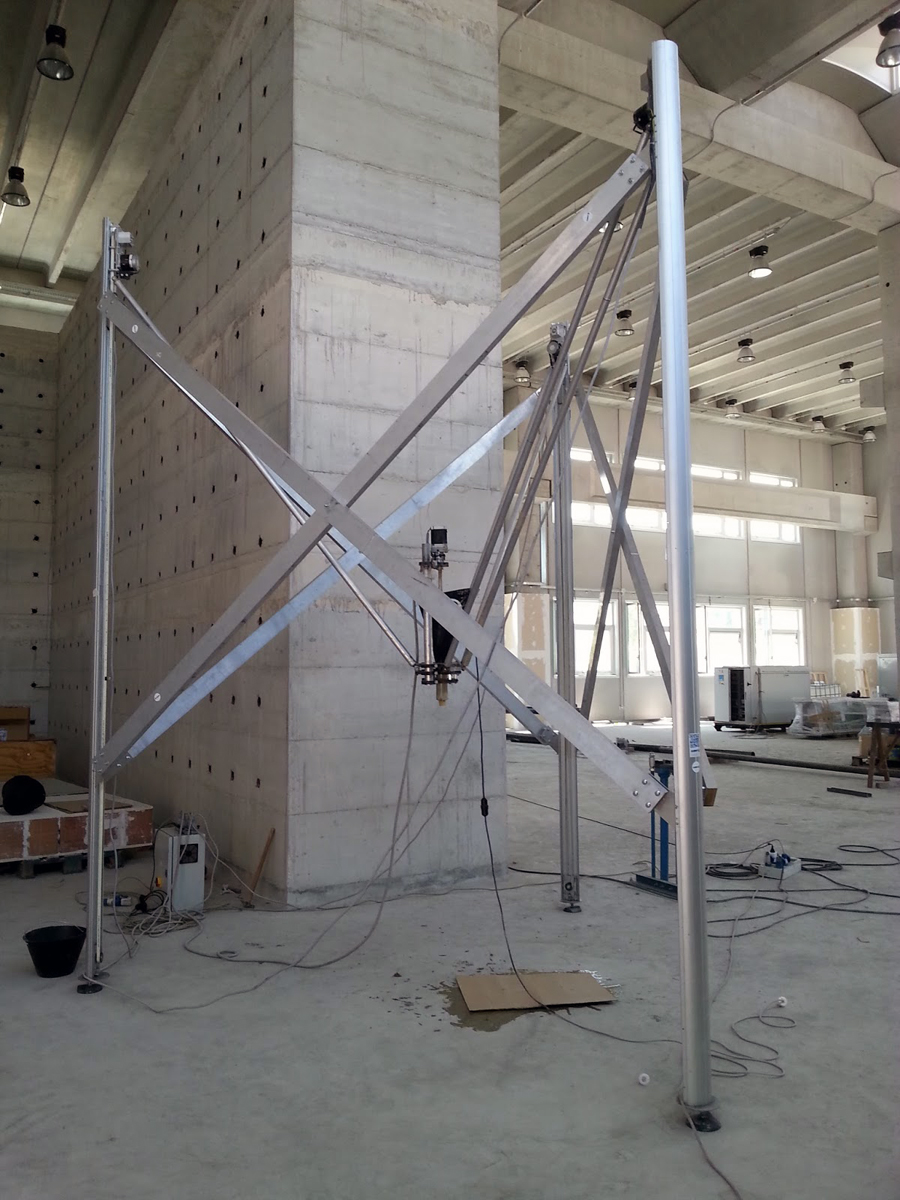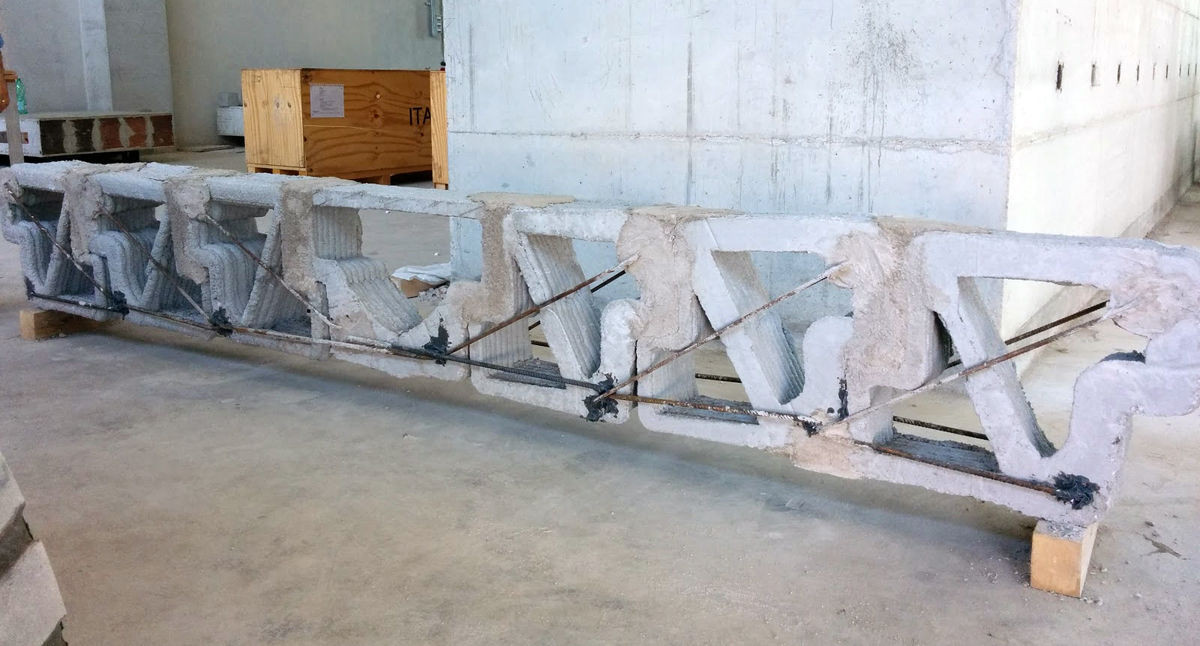As Italy’s World Advanced Saving Project (WASP) embarks on its mission to save the world through affordable and sustainable 3D printed housing, WASP has made a significant breakthrough with their 4 meter-tall BIGDELTA WASP 3D printer. Today, the Italian firm announced the ability to 3D print a modular reinforced concrete beam that will significantly aid the company in creating sustainable housing.
To advanced their World Advanced Saving Project, WASP sent their BIGDELTA WASP to University of Naples Federico II, where Prof. Domenico Asprone and his team are studying concrete mortars. In conjunction with the Campania region’s high-tech sustainable building district, the Stress Consortium, and the University of Pavia, the team was able to 3D print concrete components with reinforcement beams that eliminates the need for molds, while allowing for, large, complex shapes.

While they have 3D printed a number of structures, the group will now move on to 3D printing its first large-scale beam, about 3 meters long, with which they will test the mechanical performance of their 3D printed, reinforced concrete. After that, they will look into new assembly systems for putting these parts together. Once complete, WASP hopes to 3D print more complex structures, including bridges.
WASP does point out that concrete is not their ideal medium, saying, “WASP was born with the dream of printing houses with 100% natural materials, but wisdom teaches that extremism is never a good thing. While trying to find a way to print houses with natural materials and at zero km, there is an urge to plunge into the routine and make a contribution now. And this is when WASP project begins its challenge with materials taboos, such as Co2 generators.”
“Concrete is bad for the planet,” the firm continues, “A ton of cement generates a ton of Co2, but with 3D printing you can cut down more than 50% of pollution. These are mind-boggling numbers, which can be reached only because we can create programmed infills, Otherwise, with the normal techniques it would be unthinkable to create hollow systems.”
Still, because WASP, one day, hopes to bring its 3D printing construction system to economically challenged nations to 3D print sustainable housing, it has a goal of 3D printing with locally sourced materials, including mud and clay. Hopefully, WASP’s BIGDELTA tech will be implemented in a variety of ways as they move towards that goal, so that, while those in industrialized nations continue to use concrete, they can do so more sustainably, and those in less industrialized nations can rely on locally sourced materials.




